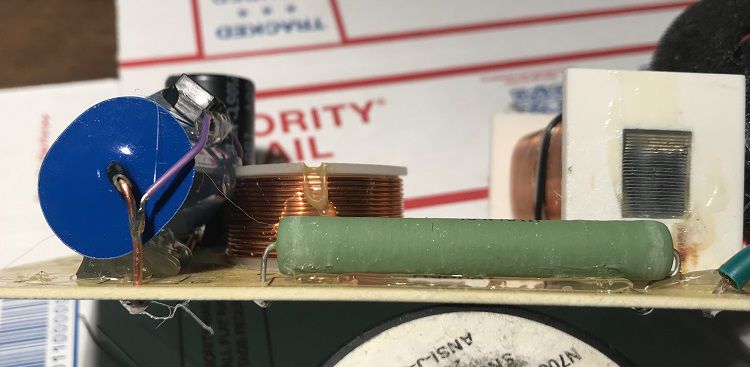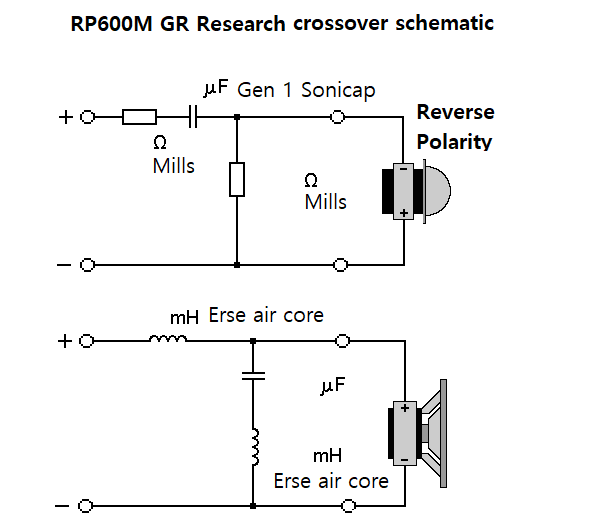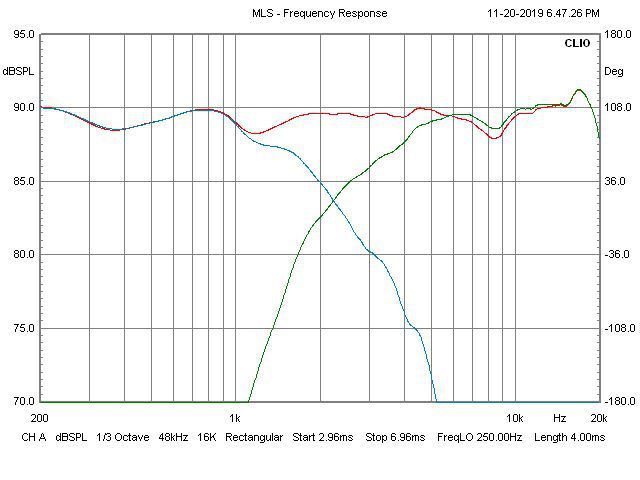
speedmadness
Members-
Posts
6 -
Joined
-
Last visited
speedmadness's Achievements

Newbie (1/9)
8
Reputation
-
How to make the RP-160M come alive!
speedmadness replied to Tweaker256's topic in Technical/Restorations
One other thing to add. I use my RP600Ms paired with a HSU STF2 sub fed from my second set of speaker level outputs. The klipsch run full range. It is amazing how much bigger and more real a small pair of speakers can be with some quality, as opposed to booming, bass added in. If you have some small Klipsch bookshelf speakers, you owe it to yourself to try them with a quality sub.- 88 replies
-
- 1
-

-
- reference premiere
- bookshelf
-
(and 2 more)
Tagged with:
-
How to make the RP-160M come alive!
speedmadness replied to Tweaker256's topic in Technical/Restorations
After living with my stock RP600Ms for a while, I still wasn't convinced I was keeping them. $200+ to try the GR research crossover was also more than I wanted to spend, seemed like I would be better off selling the speakers and putting the extra cash towards some Heresy or KLF20s. Anyway, I finally decided I would try some of my own crossover mods after educating myself a bit of the stock vs GR Research crossovers and corresponding response curves. There were really 2 issues to me, the dip in response at the crossover, and the slightly too much output of the tweeter. What I ended up doing, was much simpler than the full new crossover. I replaced the stock tweeter 9 ohm sand resistor and unknown 3.9uF cap, with a Jantzen Superes 10 ohm resistor and a Clarity Cap PX 3.9uF with a Vishay 1837 0.01uF bypass cap. I also reversed polarity of the tweeter as Danny had done. That seemed to help out the second issue. The first I went at much more simply. I removed the stock 1.4mh iron core inductor, and removed 2 windings to drop the inductance a bit, which would slightly raise the crossover point. The online calculator I used seemed to put the inductor at about 1.36mh now, and the crossover should have moved up from 1500hz to about 1650hz. That seems to have filled in the dip and along with the tweeter circuit changes, have made these, to my ears, much better sounding. I had already added damping to the back of the horns and the woofer baskets, as well as adding some cabinet bracing front to back and side to side. I've got $22 in parts, including the shipping from partsconnexion, and couldn't be happier. The ClarityCap PX is not a high end cap by any means, but there were a limited selection of in-stock caps in the 3.9uF value. I wanted to use ClarityCap 250V CSA, but they are back ordered. Most of the lower cost options in 3.9uF were sold out at partsconnexion. Humblehomadehifi highly recommended the tiny Vishay 1837 bypass caps, and they are less than $1, so that was a no brainer. For a small investment in money, I'm very happy.- 88 replies
-
- 2
-

-
- reference premiere
- bookshelf
-
(and 2 more)
Tagged with:
-
How to make the RP-160M come alive!
speedmadness replied to Tweaker256's topic in Technical/Restorations
GR Research crossover with out values. I think the crossover values are Danny's intellectual property, so I did not include them.- 88 replies
-
- 2
-

-
- reference premiere
- bookshelf
-
(and 2 more)
Tagged with:
-
How to make the RP-160M come alive!
speedmadness replied to Tweaker256's topic in Technical/Restorations
- 88 replies
-
- reference premiere
- bookshelf
-
(and 2 more)
Tagged with:
-
How to make the RP-160M come alive!
speedmadness replied to Tweaker256's topic in Technical/Restorations
Have only done some virtually free mods to them so far, adding mass to the tractrix horn/waveguide to lower any resonance and the same thing to the stamped steel basket of the bass driver. I'm going to do some cabinet bracing as well as they are very thin and resonant. GR Research want to sell you $50 of NoRez, which is sort of Dynamat with foam rubber on it, but that, to me, only adds mass to the cabinet walls, it doesn't keep them from moving, and I feel both are important. I used Dynamat on the woofer basket, and most of a tube of 3006 Ultra Siliconized acrylic sealant on the waveguides. It stays a dense rubber consistency when it dries.- 88 replies
-
- 2
-

-
- reference premiere
- bookshelf
-
(and 2 more)
Tagged with:
-
How to make the RP-160M come alive!
speedmadness replied to Tweaker256's topic in Technical/Restorations
This post seems to have run its course, but I went through it looking at info on my RP600Ms. My crossover circuit board even says RP160 / RP600 on it. I know the resistor and Capacitor values are identical and the Inductors most likely are the same values also. I watched all the GR Research stuff on Danny's crossover mods, and have pretty much figured out what he did different than has been talked about here. His results seem pretty good. The stock curve shows a big hole at the crossover point, 1500Hz. When Danny installed an entire new crossover of his own design, he achieved a remarkably flat out put, and also raised the crossover point to around 2200Hz. The bass driver got a lower value inductor, which extends the frequency that the woofer continues to play, and the 43uF electrolytic cap was replaced with a notch filter consisting of a Capacitor and a small inductor. I think that mod by itself would really help even out the response curve by bringing the woofer output up, but he also used a couple Mills resistors and a lower value Sonicap in the tweeter circuit, as well as reversing the polarity. It's a pretty remarkable output curve he achieved. Incidently, Klipsch rates these at 96dB/W/M, but they measure more like 90.- 88 replies
-
- 1
-

-
- reference premiere
- bookshelf
-
(and 2 more)
Tagged with:

.thumb.jpg.5f5221304dc9ebb1c9dbb08a8d01f306.jpg)










